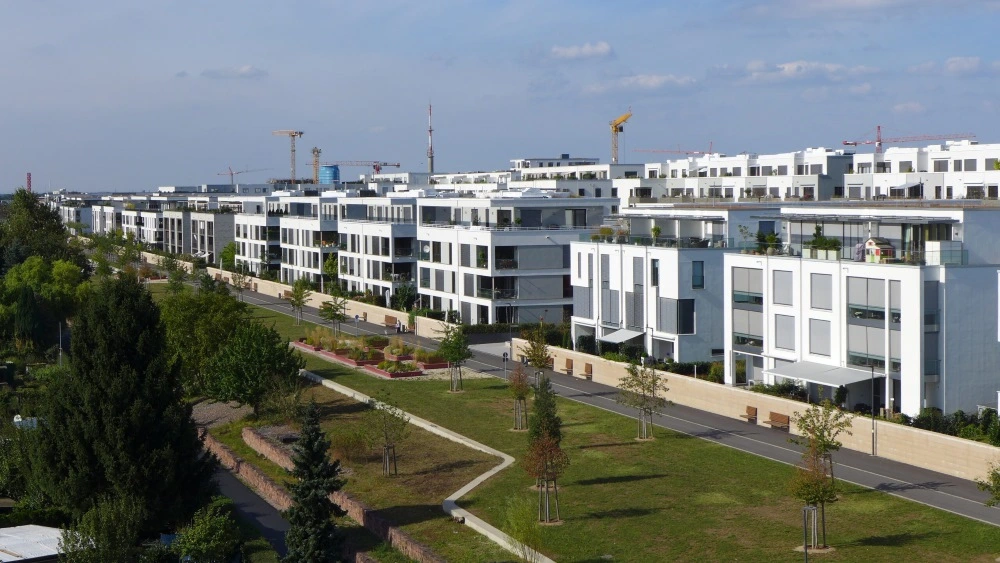We spend as much as 90% of our lives indoors, according to the U.S. Environmental Protection Agency. So it’s vitally important in the built environment that the indoor spaces where we live and work are optimized for our health and wellbeing.
Environmental control systems (ECS) play a pivotal role in ensuring that the spaces we inhabit are appropriately ventilated and temperature-regulated. They also have a direct impact on our personal health and well-being, making them a crucial aspect of our daily lives.
According to the World Health Organization (WHO), 2.3 billion people around the world are at risk of heart disease, lung cancer, and strokes as a consequence of high indoor air pollution. Therefore, building design must prioritize efficient ECS technology that creates the healthiest possible environment for human occupation.
But how can facilities managers ensure that their systems operate most effectively to maximize the benefits for our health, and how can developers incorporate it into green building design? This post will explain ECS systems and the data behind them.
The need for Environmental control systems (ECS) in buildings
Did you know that a building can cause you to feel unwell if it’s improperly managed? Sick building syndrome (SBS) can manifest symptoms from eye and skin irritation to respiratory infections. The primary causes are poor building ventilation, malfunctioning HVAC systems, and poor-quality light construction.
A building’s environmental safety and occupant health should always be a top priority in construction. Indoor air quality is a core aspect of the UN’s Sustainable Development Goals (SDG target 3.9.1). During the pandemic, airborne transmission of COVID-19 renewed focus on ventilation, with WHO recommending stronger guidelines for environmental control in buildings to prevent the spread of viruses.
In commercial real estate (CRE), environmental control can also impact the productivity of an office’s workforce. A 2021 study by Harvard University found that increased indoor air pollution lowers cognitive functioning and reactive response times.
The role of ECS in building health
In modern building design, environmental control systems are closely integrated with building management systems (BMS) to optimize a structure’s heating, ventilation, and air conditioning (HVAC) apparatus. These systems play a significant role in creating a healthier building environment by focusing on three key areas: temperature, air quality, and ventilation.
- Temperature Regulation: ECS maintains a comfortable temperature range, preventing occupants from getting too hot or cold. Consistent temperature control helps produce optimum relative humidity levels (between 40% and 60%), further improving comfort and preventing mold development.
- Improved Air Quality: ECS can filter out harmful air pollutants, dust, and allergens. This is especially important in modern buildings that tend to be sealed up tighter for energy efficiency. Cleaner air reduces respiratory problems and improves overall well-being for occupants.
- Ventilation Control: Modern ECS systems are highly efficient at bringing in fresh outdoor air and removing stale indoor air. This helps dilute contaminants and reduce the build-up of CO2, which can cause drowsiness and headaches.
Examples of successful ECS integration
Completed in 2022, the Bahnstadt project in Heidelberg, Germany is years ahead of its time. It’s the world’s first zero-emission city district, far exceeding the country’s stringent energy efficiency standards. Homes on the 116-hectare site use a highly advanced ventilation system that uses real-time data to optimize indoor air quality and recycle hot exhaust air for heating.

Credit Stadt Heidelberg/Ralf Bermich
Five-star office space in New York’s Manhattan district is priced roughly at $100 per square foot, but perhaps is none more innovative with its ECS than the Bank of America Center at One Bryant Park. When it opened in 2010, it was the first skyscraper in the U.S. to achieve LEED Platinum certification. Its HVAC system monitors indoor air quality in all occupied spaces, controlling ventilation levels to meet occupation demands.

Credit The Durst Organization
While its unique underfloor ventilation system was highly advanced for its time, the management team behind One Bryant Park had to control its ECS carefully. The building’s intensive financial services occupation led to overventilation and higher energy consumption, which required close monitoring of the building’s air quality and energy consumption levels to maintain its LEED status.
Benefits of ECS
For building management, ECS technology offers wider benefits to a building’s operation beyond improved ventilation and air quality. Here are some key examples:
Fire Safety
ECS saves lives. In the event of a fire, ECS technology works with smoke control systems to propel smoke and dirty air outside the building and away from key evacuation areas like stairwells and corridors. This will typically work in connection with other fire systems within a building management system (BMS), such as sprinkler and fire alarm systems.
Energy efficiency and green building benchmarks
Advanced HVAC climate control systems help improve a building’s energy efficiency by adapting consumption to match building occupation and demand. In the U.S., ENERGY STAR-certified HVAC equipment can save as much as 30% on yearly energy bills.
Moreover, implementing ECS technology in your real estate portfolio will support your organization’s claim to industry benchmarks such as LEED and BREEAM. The U.S. Green Building Council set specific standards on minimum indoor air quality, requiring buildings to monitor CO2 levels with automated systems.
Integration with building automation systems
ECS will often exist as a sub-system of a more comprehensive building automation system (BAS). In commercial buildings, this infrastructure will manage everything from lighting levels to security and building access.
ECS technology can help inform BAS infrastructure by feeding in real-time indoor air quality and room temperature data. BAS software can analyze and make real-time decisions that adjust to the building’s needs.
For example, if an ECS detects a temperature increase in a particular office space, it can relay this data, and the BAS software can signal the building’s HVAC system to feed cool air into the room. This technology, with both systems working hand-in-hand, can significantly improve a building’s operational efficiency.
In simpler terms, the BAS acts like a conductor, coordinating the various systems within a building, including the ECS, to ensure everything works together seamlessly for optimal comfort, efficiency, and building management.
Let ProptechOS become your data pipeline
Integrating highly advanced ECS technology into an existing BMS or BAS might seem overwhelming, particularly with a complex Internet of Things (IoT) framework with thousands of sensors and apps generating data across a real estate portfolio.
At ProptechOS, we understand the complexities of building optimization and the performance benefits they can offer. That’s why we developed our proprietary operating system to model smart building performance. It collects real-time data from BMS and their IoT devices across a portfolio, unifying all systems into one platform.
Your CRE business can sign up for a free trial today.

Per Karlberg
Per Karlberg, a distinguished technology executive, demonstrates deep expertise in the nexus of real estate, technology, and ESG. Holding advanced degrees from Lund University, and with key roles as CEO of our company and Co-Founder of ProptechOS, he has shaped the proptech field through significant contributions to real estate technology advancements. His instrumental work in co-authoring “The realestatecore ontology” has facilitated digital transformation and ESG breakthroughs in the real estate sector.
Read his full bio and information here.

